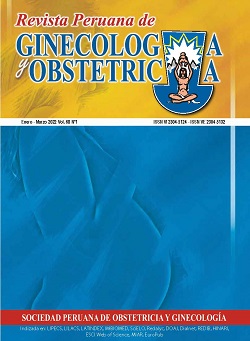Placental anastomoses in monochorionic twin pregnancies: study using vascular injection techniques and relationship with fetal complications
DOI:
https://doi.org/10.31403/rpgo.v68i2382Keywords:
Twin pregnancy, Monochorionic, Placental circulation, Chorion, Placental anastomosisAbstract
Introduction: Twin pregnancies are classified into two groups: monochorionic (MC) and dichorionic (DC). MC twins are 5 to 6 times more likely to have an adverse perinatal outcome. The study of a group of 22 placentas from patients with monochorionic twin pregnancy who presented with complications such as feto-fetal transfusion syndrome (FFTS), anemia polycythemia sequence (TAPS), reverse arterial perfusion syndrome (TRAP) and selective intrauterine growth restriction (sIUGR) is presented. Objective: To determine the predominant types of anastomoses in placentas with feto-fetal transfusion syndrome, anemia polycythemia sequence, reverse arterial perfusion syndrome and selective intrauterine growth restriction. Methodology: The placental injection technique was applied for the recognition of anastomoses. Results: The mean number of anastomoses per placenta in STFF, which was the most severe complication, was 8.2 ± 2.2. The AV and VA anastomoses predominated in 83%. There were signs of placental discordance in 30% of placentas, and 40% of placentas presented velamentous cord insertion. Conclusions: Vascular anastomoses are not only involved in the etiology of the main pathologies of monochorionic gestations, but also influence their management. We believe that an adequate placental study of each of these cases by means of the placental vascular injection technique would be essential in centers that aspire to develop differentiated fetal management for each of these complications.
Downloads
Downloads
Published
How to Cite
Issue
Section
License
Copyright (c) 2022 Igor Hermann Huerta Sáenz, José Carlos Elías Estrada, Ronald Arce Villavicencio

This work is licensed under a Creative Commons Attribution 4.0 International License.
Esta revista provee acceso libre inmediato a su contenido bajo el principio de que hacer disponible gratuitamente la investigación al publico, lo cual fomenta un mayor intercambio de conocimiento global.















